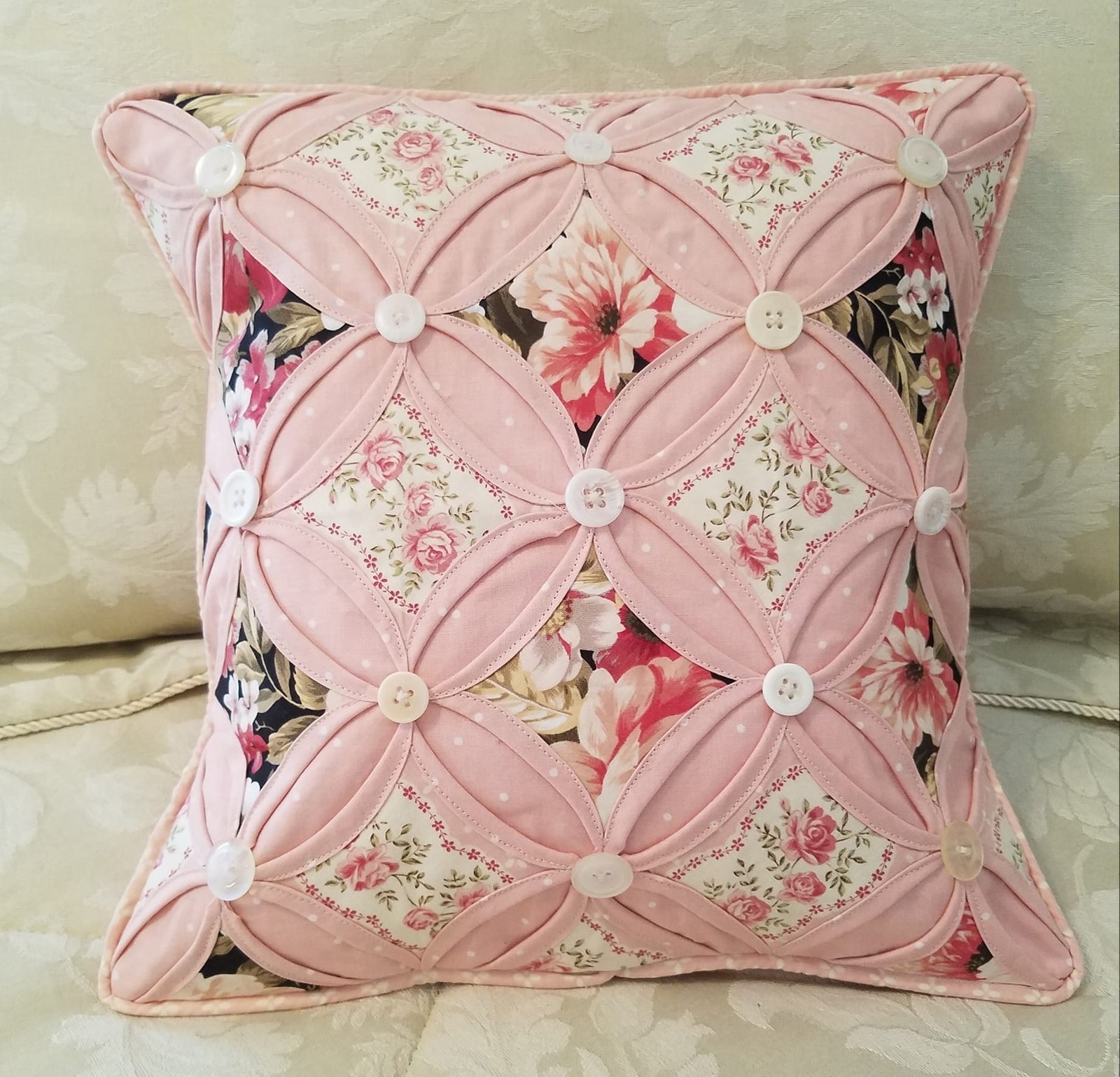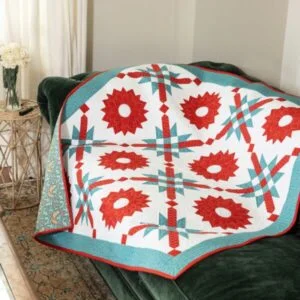Creating a Cathedral Windows Quilt Squares pattern can be a captivating and rewarding project for quilters of all skill levels. This classic pattern, known for its intricate and elegant design, offers a unique way to showcase fabric and create beautiful quilt blocks. If you’re interested in making your own Cathedral Windows quilt, you’re in the right place! This article provides a free pattern and a comprehensive guide to help you get started.
The Cathedral Windows quilt pattern stands out because of its distinct look that resembles stained glass windows found in cathedrals. Its charm lies in its ability to transform simple fabric squares into a striking and textured quilt. Whether you’re a seasoned quilter or a beginner, understanding how to make Cathedral Windows quilt squares can enhance your quilting repertoire and produce stunning results.
In this guide, we’ll walk you through the steps of creating Cathedral Windows quilt squares, from gathering your materials to assembling your quilt blocks. By the end of this article, you’ll have a clear understanding of the pattern and be ready to embark on your own quilting adventure.

1. Understanding the Cathedral Windows Pattern
The Cathedral Windows quilt pattern is a traditional design that features folded fabric to create a distinctive look. Each square in the pattern is designed to mimic the arched windows of a cathedral, often highlighted with a contrasting fabric in the center. This technique gives the quilt a beautiful texture and dimension.
The pattern typically involves folding fabric squares into triangles and then stitching them together to form the quilt blocks. This method creates a series of interlocking shapes that contribute to the overall cathedral window effect. Although the process can be a bit intricate, the final result is well worth the effort.
To start, you’ll need to familiarize yourself with the basic techniques of fabric folding and stitching. Understanding these techniques will help you achieve the precise folds and neat stitches required for the Cathedral Windows pattern.
Gathering the right materials is crucial for this project. You’ll need fabric squares, a rotary cutter, a ruler, and a cutting mat. Additionally, having a good quality sewing machine and thread will ensure that your stitches are secure and your quilt blocks turn out beautifully.
2. Gathering Materials and Preparing Your Fabric
Before diving into the Cathedral Windows quilt squares pattern, it’s essential to gather all the necessary materials. You’ll need a selection of fabrics in different colors and patterns, as well as a few tools to help you with cutting and stitching.
Start by choosing your fabric. For the Cathedral Windows pattern, it’s often recommended to use a mix of solid and patterned fabrics to highlight the intricate design. Consider using fabrics with contrasting colors to make the window panes stand out.
Once you’ve selected your fabrics, cut them into squares. The size of the squares will depend on your pattern and the desired size of your quilt blocks. A common size is 5 inches by 5 inches, but you can adjust this based on your preferences.
Next, press your fabric squares to remove any wrinkles. This step is crucial as it ensures that your folds and seams will be crisp and accurate. Use a hot iron and a pressing cloth to avoid scorching the fabric.
Finally, prepare your workspace. A clean and organized area will help you keep track of your pieces and make the sewing process smoother. Lay out your fabric squares in the order you plan to use them to get a sense of how the colors and patterns will come together.
3. Creating the Cathedral Windows Blocks
Once you have your materials prepared, you can start creating the Cathedral Windows blocks. This step involves folding and stitching your fabric squares to form the iconic cathedral window effect.
Begin by folding each fabric square in half diagonally to create a triangle. Press the fold with an iron to set it. Next, fold the two outer edges of the triangle towards the center, creating a smaller triangle shape with a point at the top.
Once you’ve folded the fabric, place it onto a background square, positioning it so that the folds create the window panes. Secure the folded fabric in place with pins or fabric glue.
Stitch around the edges of the folded fabric, attaching it to the background square. Be sure to use a small stitch length for a neat finish. After stitching, trim any excess fabric from the back to reduce bulk.
Continue this process for each Cathedral Windows block until you have the desired number of blocks for your quilt. Arrange the blocks in a layout that you find visually pleasing, and prepare to assemble them into your quilt top.
4. Assembling and Quilting Your Cathedral Windows
With your Cathedral Windows blocks complete, it’s time to assemble them into a quilt top. This process involves joining the blocks together and adding any additional elements to finish your quilt.
Start by arranging your blocks in the desired pattern. You can place them in a grid format or create a more dynamic layout with alternating colors and patterns. Once you’re happy with the arrangement, sew the blocks together in rows.
Press the seams as you go to ensure that the quilt top lays flat and smooth. After joining all the rows, sew them together to complete the quilt top.
The next step is to add a backing fabric and batting. Lay out the backing fabric on a flat surface, then place the batting on top, followed by the quilt top. Baste the layers together using safety pins or a temporary adhesive spray.
Finally, quilt your layers together. You can use a quilting machine or hand-quilt the layers for a personal touch. Finish the quilt by adding binding around the edges.
FAQ: Cathedral Windows Quilt Squares
Q: What fabric should I use for Cathedral Windows quilt squares? A: For Cathedral Windows quilt squares, a mix of solid and patterned fabrics works well. Choose fabrics with contrasting colors to make the window panes stand out.
Q: How do I determine the size of fabric squares for the Cathedral Windows pattern? A: A common size for fabric squares is 5 inches by 5 inches. However, you can adjust this based on your pattern and the size of the quilt blocks you want to create.
Q: Can I make Cathedral Windows quilt squares by hand? A: Yes, Cathedral Windows quilt squares can be made by hand. Just ensure that your folds and stitches are precise to achieve the desired look.
Q: What is the best way to press fabric for Cathedral Windows blocks? A: Use a hot iron and a pressing cloth to press your fabric squares. This will help remove wrinkles and set the folds accurately.
Q: How do I join Cathedral Windows blocks together? A: Arrange your blocks in the desired layout, sew them together in rows, and then join the rows to complete the quilt top. Press the seams as you go to keep the quilt top flat.
Q: What is the best method for quilting Cathedral Windows? A: You can quilt Cathedral Windows using a quilting machine or by hand. Choose a method that suits your skill level and preferences. Adding binding around the edges will complete the quilt.
Join our VIP broadcast list and gain access to exclusive patterns, all for free. As a VIP member, you’ll receive the best patterns daily, delivered directly to your device. ✨📱 It’s a unique opportunity to stay up-to-date with the latest trends and designs, curated just for you. Don’t miss out on enhancing your projects and discovering new inspirations with the best patterns every day! 🎨🔝
Conclusion
In this article, we’ve explored the Cathedral Windows Quilt Squares pattern, offering a free pattern and detailed instructions to help you create beautiful quilt blocks. We’ve covered everything from gathering materials and preparing fabric to creating and assembling the blocks. Whether you’re a novice or an experienced quilter, this guide provides valuable insights to enhance your quilting projects.
Feel free to leave your thoughts, feedback, and any suggestions for future articles. Your input is invaluable and helps us provide content that meets your needs and interests. Happy quilting!



